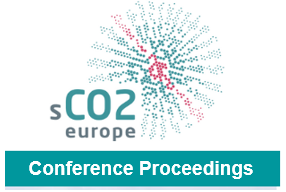Exergoeconomic analysis of a hybrid sCO2 Brayton power cycle
An exergoeconomic analysis of a hybrid power generation cycle is performed on its standalone constituents. The hybrid is based on Allam cycle configuration. Allam cycle is a supercritical carbon dioxide oxy-combustion (OC) Brayton cycle. The proposed hybrid utilizes solar power as its primary heat source and natural gas OC as a complementing heat source. The purpose of the complimenting heat source is to make up for the lost time when the sun is not available due to bad weather conditions or at nighttime. This is done to ensure the reliability, responsiveness, and availability of the cycle for power generation at all times. The hybrid is an attempt to provide power with minimal adverse effects on the environment. This study is divided into three major steps. The first and second are energy and exergy analysis. The third step is exergoeconomic analysis to obtain the cost contribution of each component relative to the cycle’s final product. Although both configurations brought similar power output and second law efficiency, the energy efficiency was higher for the OC configuration. The total product cost ($/GJ) for the OC configuration was half of that for the concentrated solar power (CSP). The unit cost of electricity in (Cent/kWh) for the CSP standalone configuration is approximately 60% higher than that of the OC configuration. In the CSP configuration, the main heat exchanger and the recuperator are the most critical units to consider for savings. Therefore, reducing the exergy destruction in the CSP main heat exchanger and the recuperator units could be cost-effective for the entire cycle, even if this would increase the component investment costs. Therefore, for exergoeconomic performance enhancement, using a recuperator with higher efficiency is recommended. On the other hand, the combustor and air separation unit (ASU) are the most critical units to consider for savings for the OC configuration. Therefore, a replacement for the ASU unit with a lower purchasing cost is recommended for overall exergoeconomic performance enhancement. The parametric study results showed that increasing the turbine’s inlet temperature is conducive to improving both configurations' thermodynamic and exergoeconomic performances. Similar trends were also obtained for the turbine inlet pressure for both configurations.
Vorschau

Zitieren
Rechte
Nutzung und Vervielfältigung:
Dieses Werk kann unter einer Creative Commons Namensnennung 4.0 Lizenz (CC BY 4.0)
Creative Commons Namensnennung 4.0 Lizenz (CC BY 4.0)
genutzt werden.
